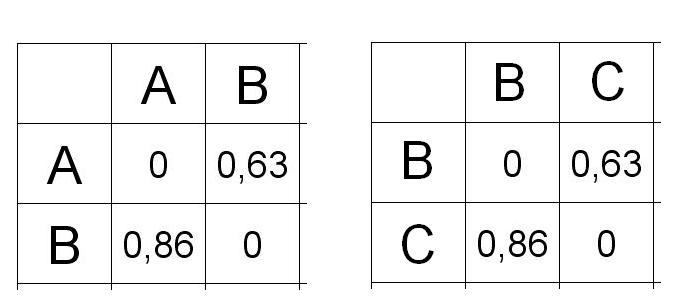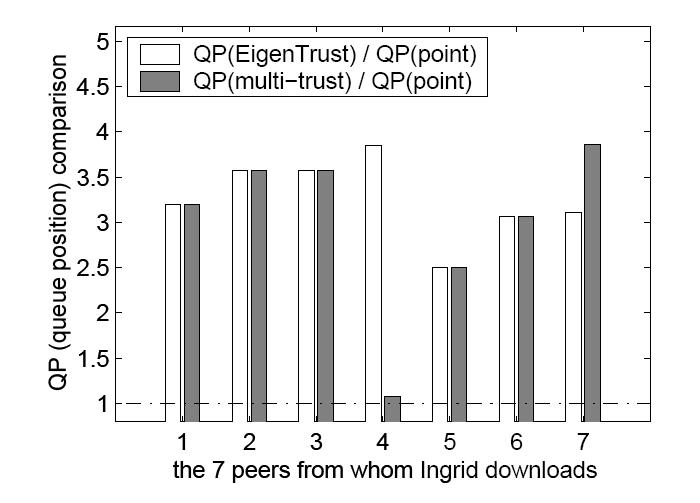Multi-Trust-Incentives: Difference between revisions
| Line 45: | Line 45: | ||
{| style="float:center; background:transparent; padding:0px; margin:0px;" |
{| style="float:center; background:transparent; padding:0px; margin:0px;" |
||
|[[Image: |
|[[Image:Cindy.jpg|thumb|center|200px]] |
||
|[[Image:Ingrid.jpg|thumb|center|200px]] |
|||
|} |
|} |
||
Revision as of 20:48, 31 July 2007
Multi-Trust-Incentives
The major problem of private history based incentive systems like Tit-for-Tat is their coverage. Resolving it requires leveraging other reputable peers’ history which leads directly to the EigenTrust mechanism. Multi-Trust-Incentives try to mix both mechanisms.
Design of Multi-Trust-Incentives
Mathematical View
One-Step-Matrix
Two-Step-Matrix
 |
A two-step-matrix describes the relation in 3 levels.
Implementation
Idea
For a duration of t, a peer i computes his own matrix by normalizing all the downloads it received from a peer j. Periodically i will ask j for j's immediate friends so j computes its own matrix. This process is repeated iteratively until i can not get any more matrices from j.
Data Costs within the Maze
Within the Maze Network a peer i has about 36 friends for one day in average. Gathering Information about one-level friends needs 32KB data space in total. Even with level two, it becomes about 1MB for information about peers. Furthermore a daily update does not produce any significant overhead. But moving to higher levels costs for peer information are progressively growing. In the end this Multi-Trust Incentive was developed just for level two because it already covers more than 60% of total traffic.
Implementation in the Maze
Performance
Coverage Experiment
 |
 |
